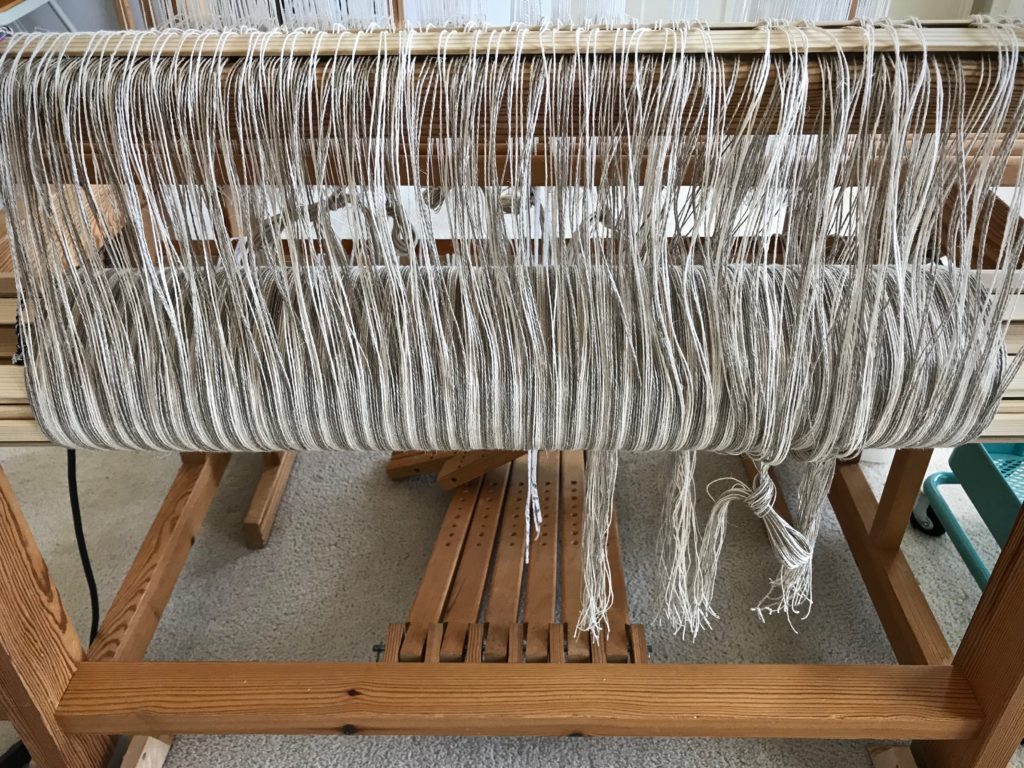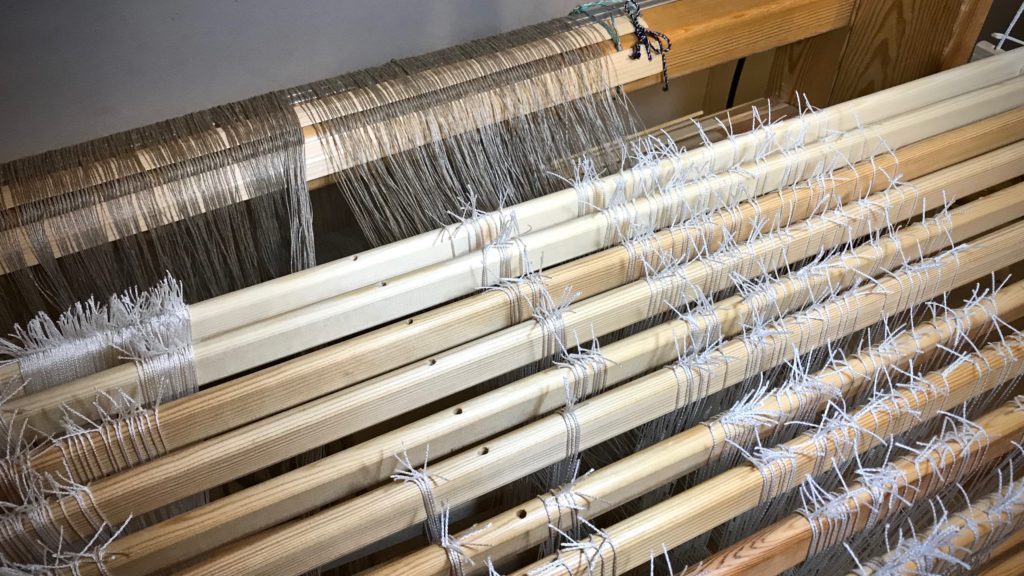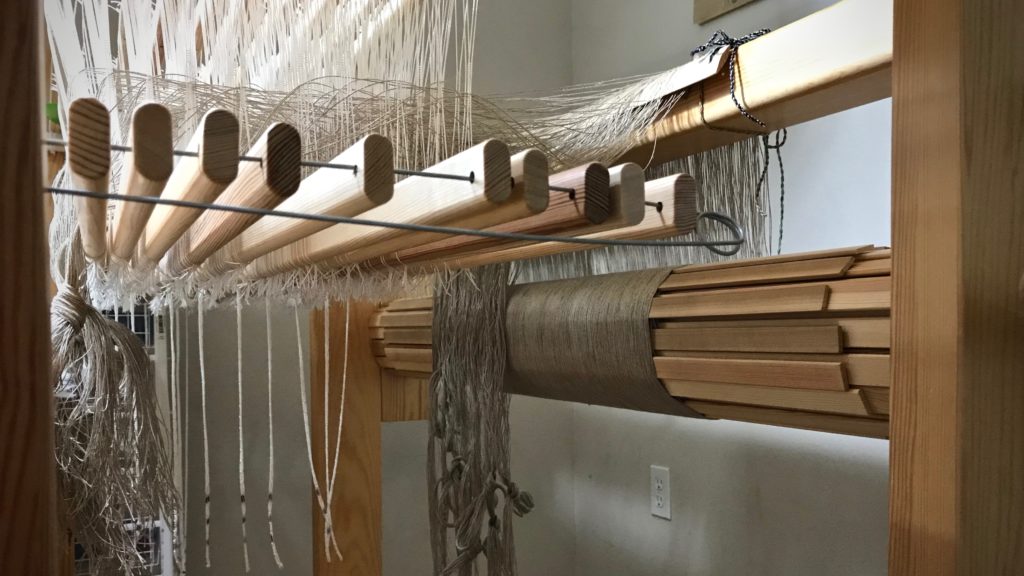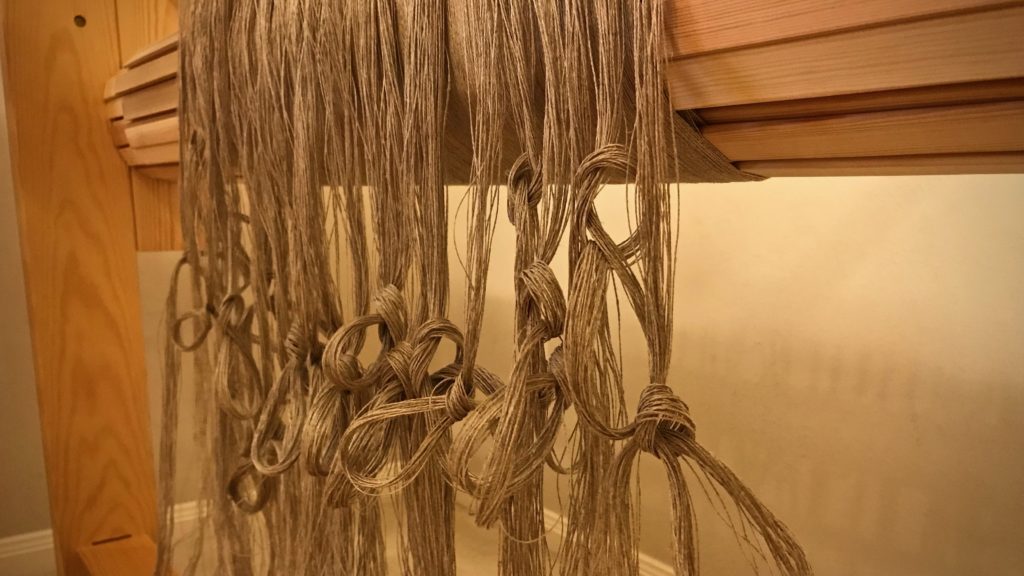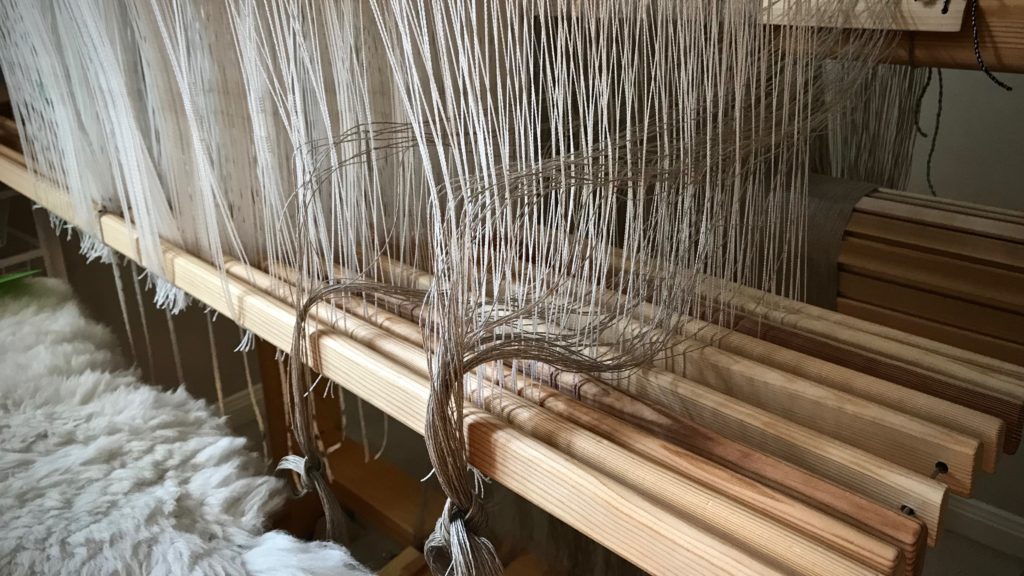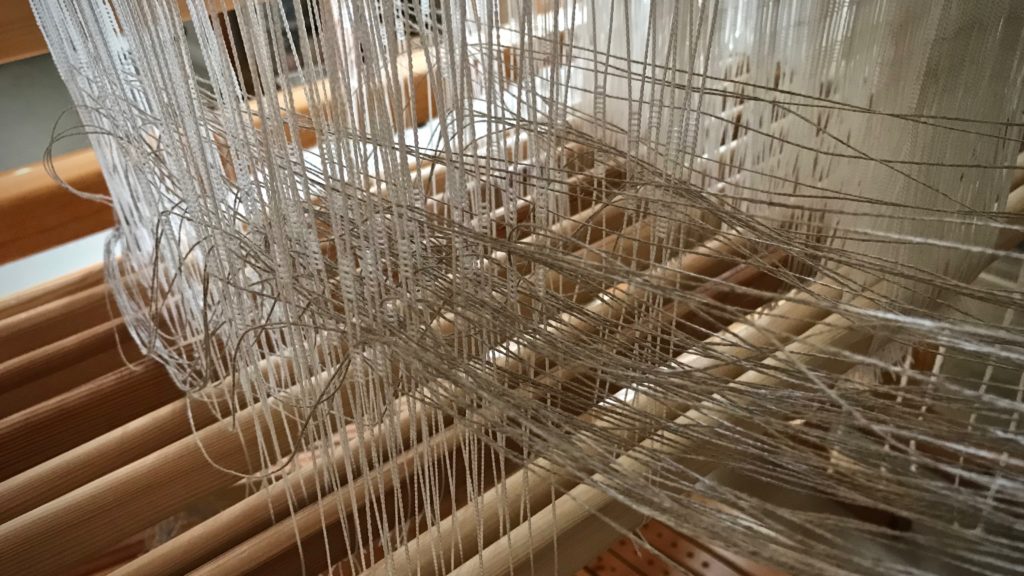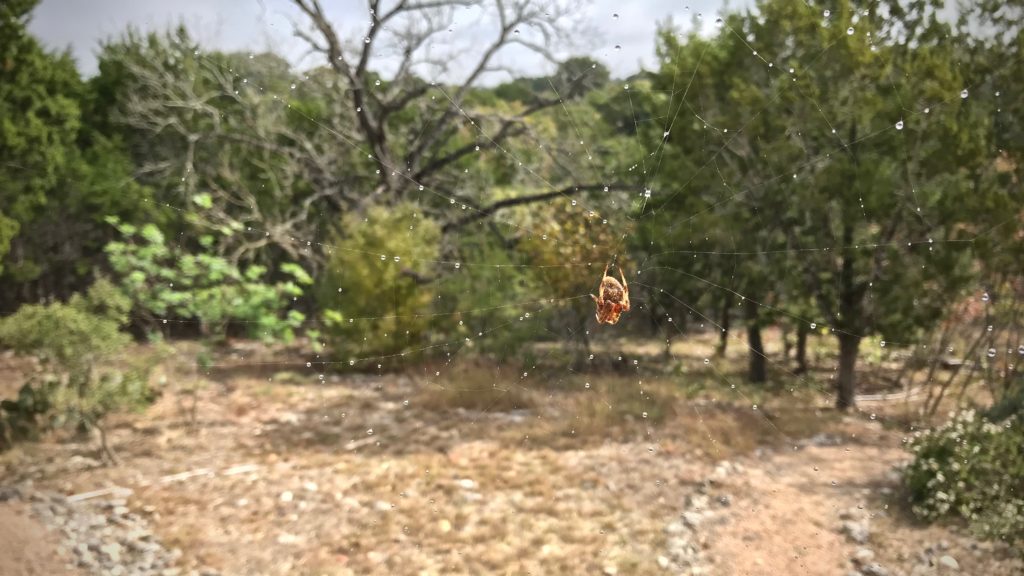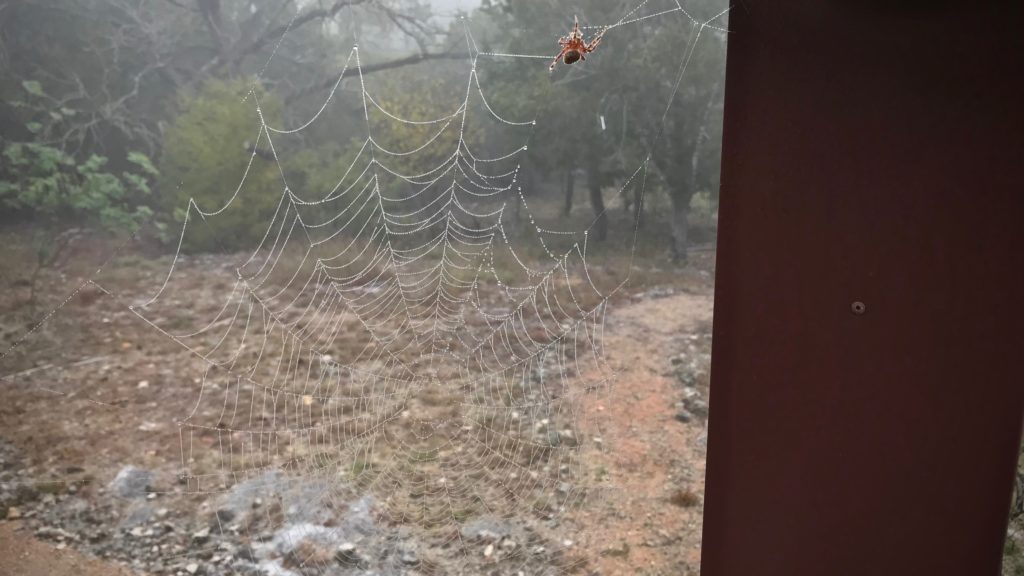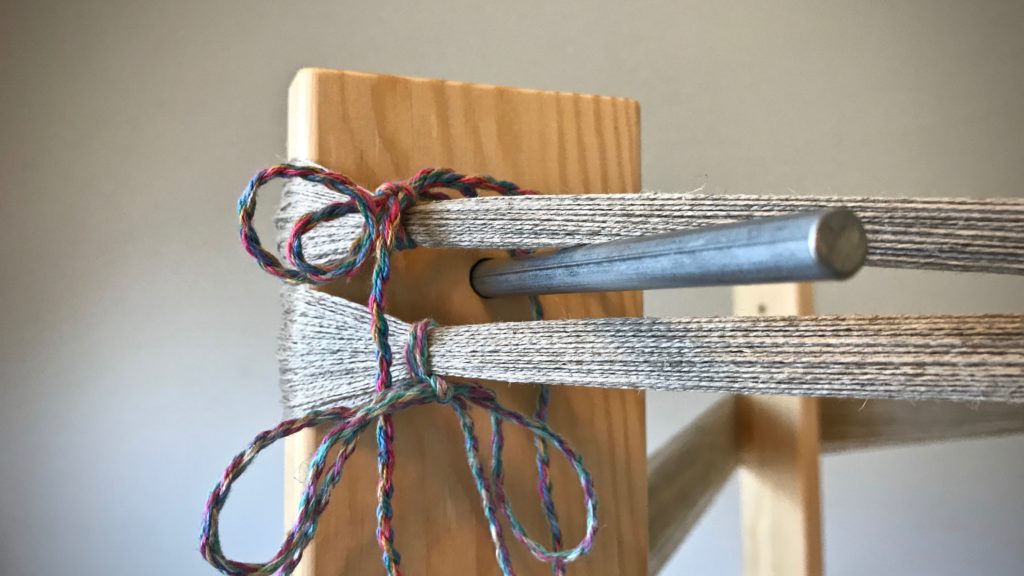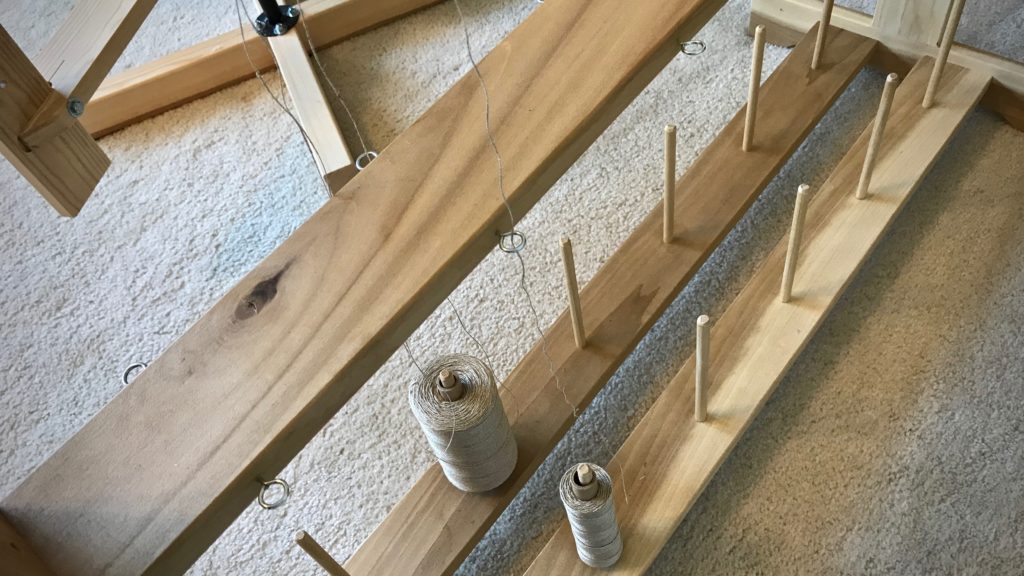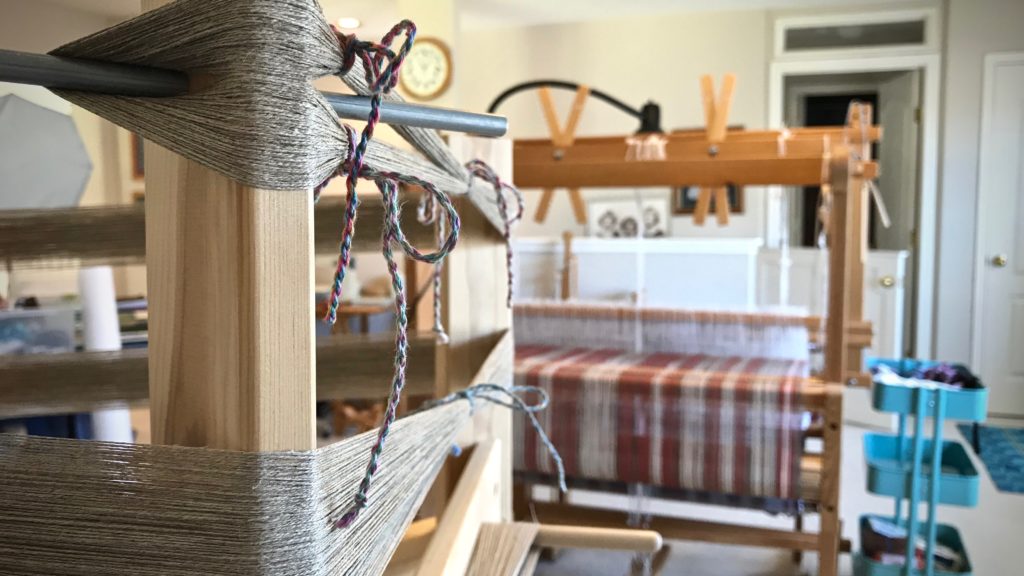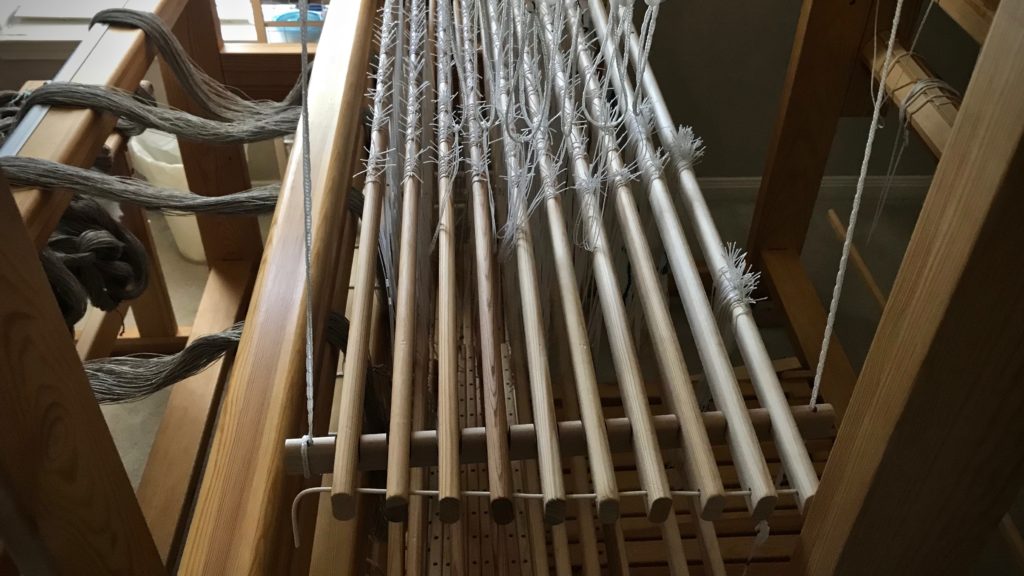A tape measure is a weaver’s best friend. Think about how many ways the tape measure serves you. I have one at each loom. Always. And I have a few others scattered around, hanging up, and in bags. Because you never know when you might need to measure something.
Tape Measure Uses
- Take measurements to determine the desired size of the finished cloth, such as window measurements for curtains, floor space for area rugs, or length of skirt tiers for skirt fabric.
- Measure the length of a guide string for winding the warp.
- Find the starting point for the warp width in the pre-sley reed.
- Double check the width of the warp after it is pre-sleyed.
- Check the width of the warp on the back tie-on bar.
- Center the reed in the beater for beaming the warp by measuring the distance from the warp in the reed to the outside edge of the beater on both sides.
- Find the starting point to sley the reed by measuring half of the warp width outwards from the center of the reed.
- Double check the width of the warp in the reed after it is sleyed.
- Center the reed in the beater for weaving.
- Adjust to the correct width of the warp on the front tie-on bar after the warp is tied on.
- Mark the measured weaving length on twill tape or ribbon to use as a weaving length guide.
- Measure how far one quill weaves.
- Measure the distance between pieces that require unwoven warp, such as for fringe, or for tying knots between rag rugs.
- Measure the distance from the first shaft (nearest the back of the loom) to the back tie-on bar (especially when you are hoping there is enough warp left to finish a symmetrical pattern).
- Measure the width and length of fabric that is cut from the loom.
- Measure the width and length of fabric that has been wet finished, dried, and pressed.
- Measure your pleasure at the loom. Immeasurable!
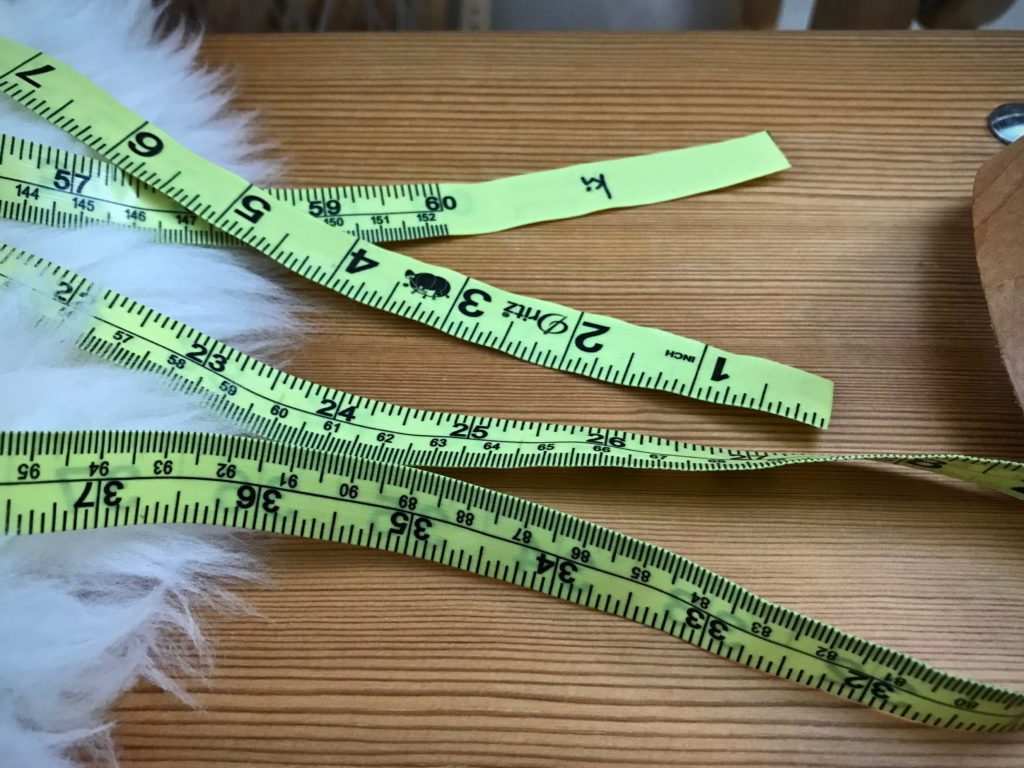
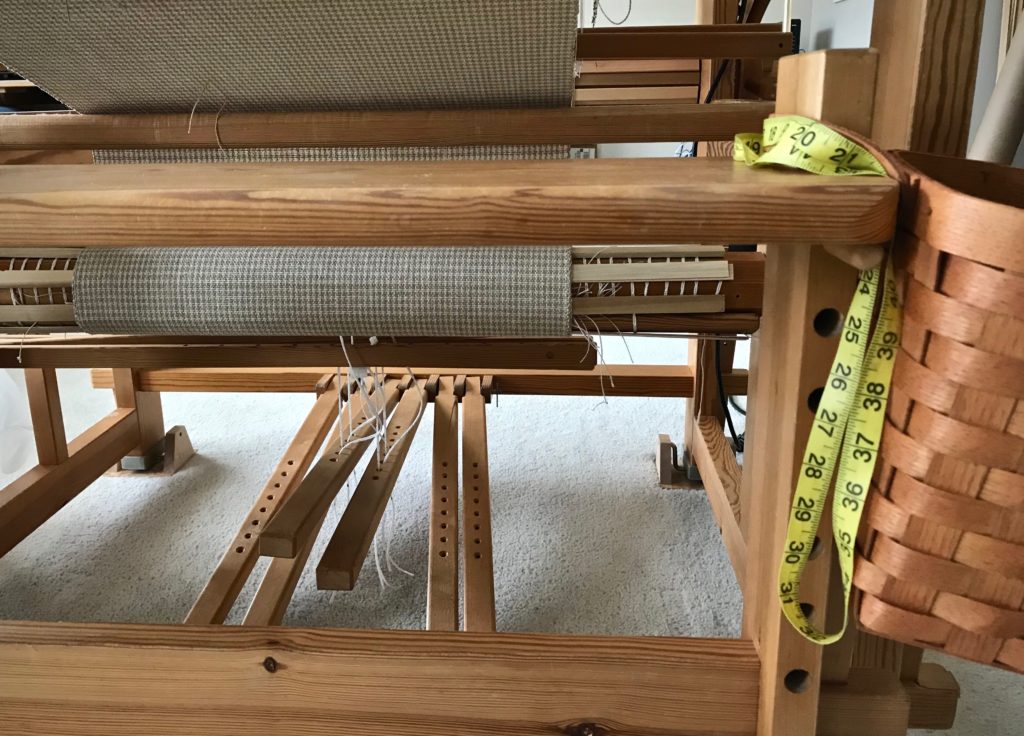
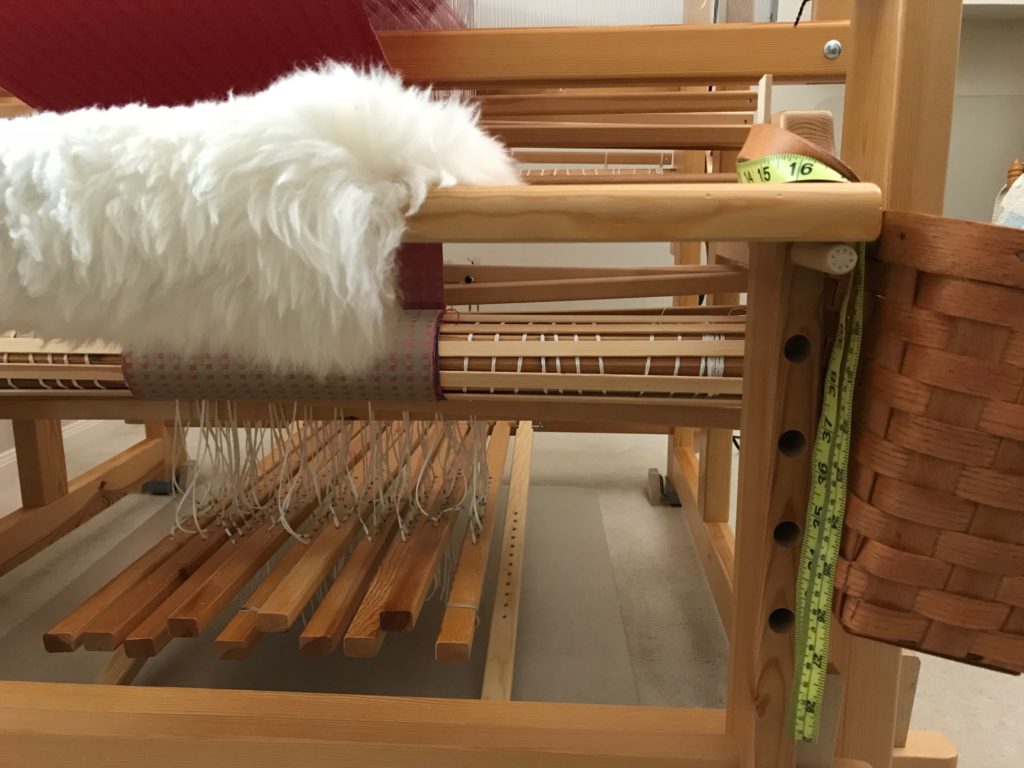
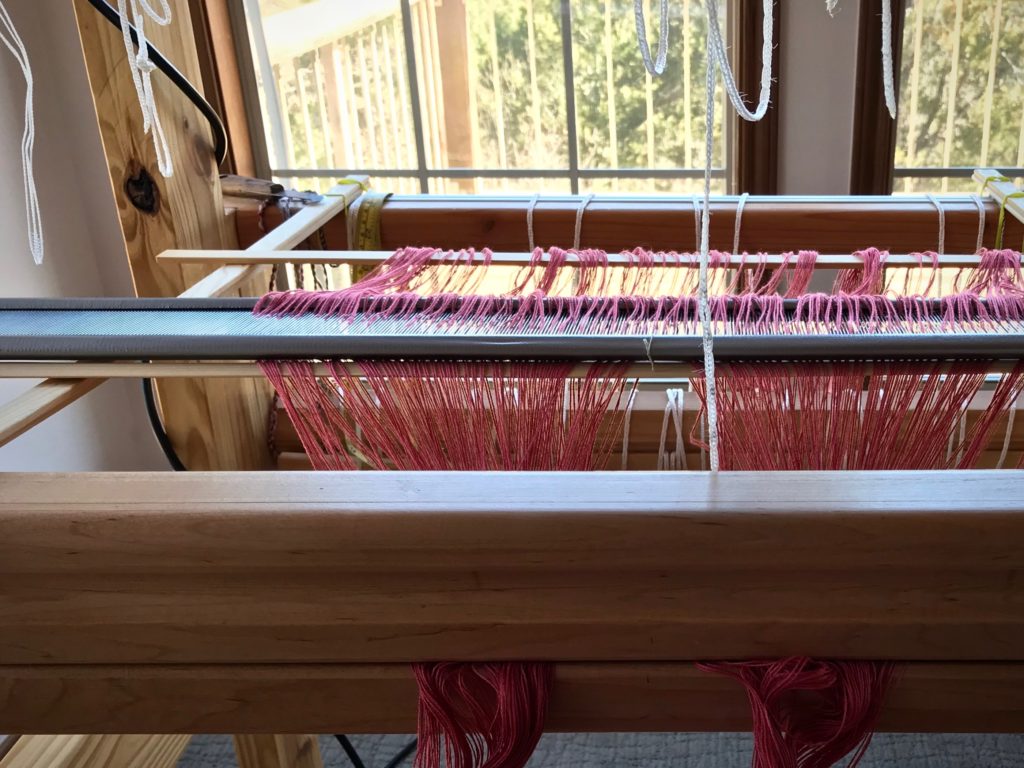
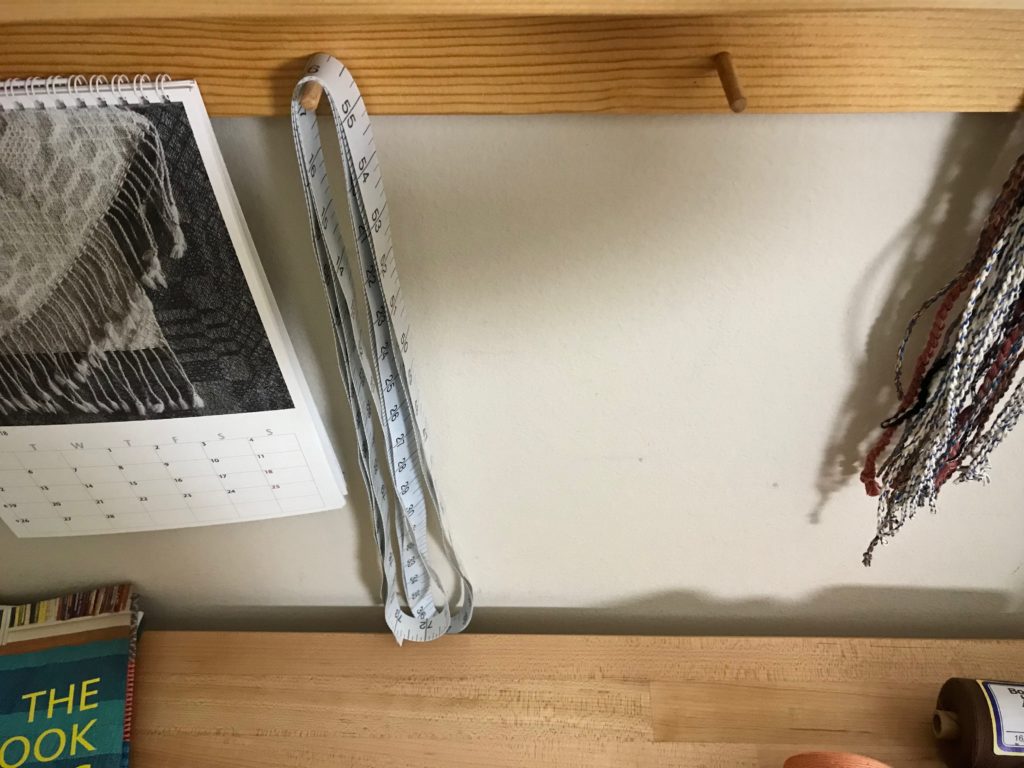
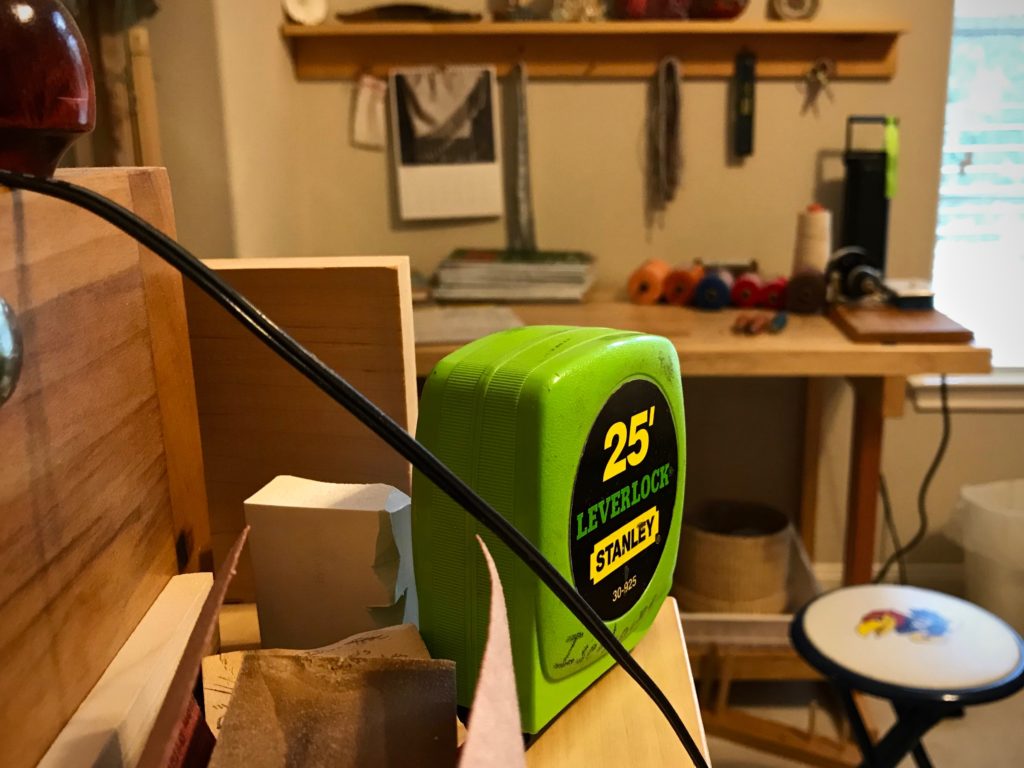
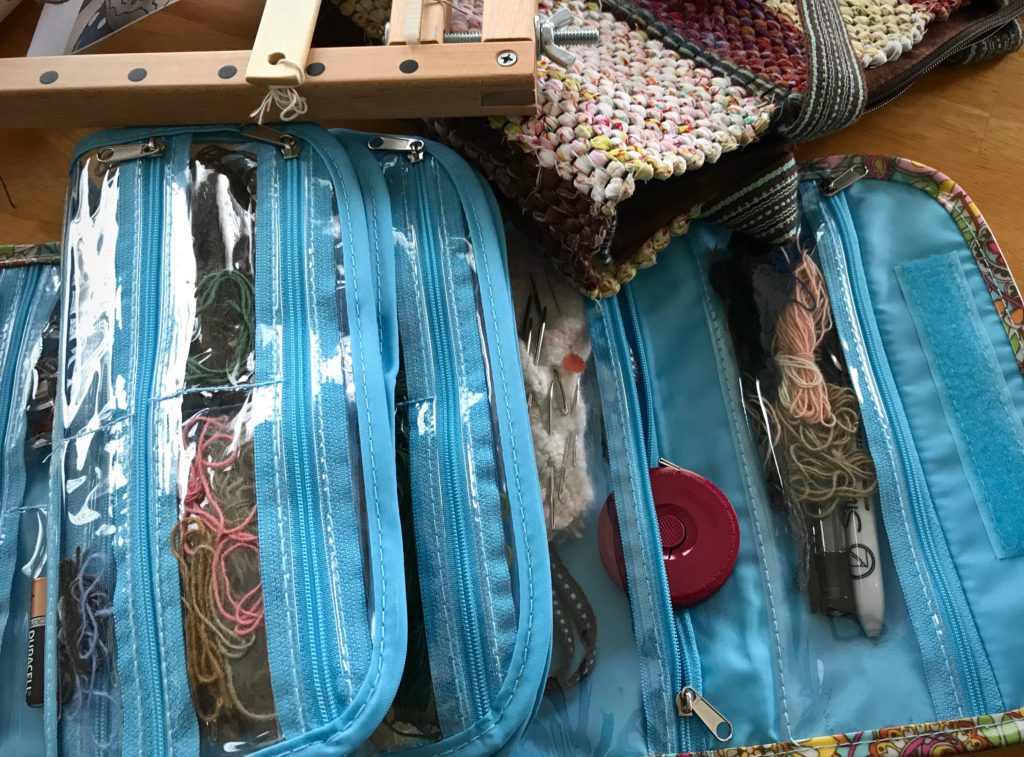
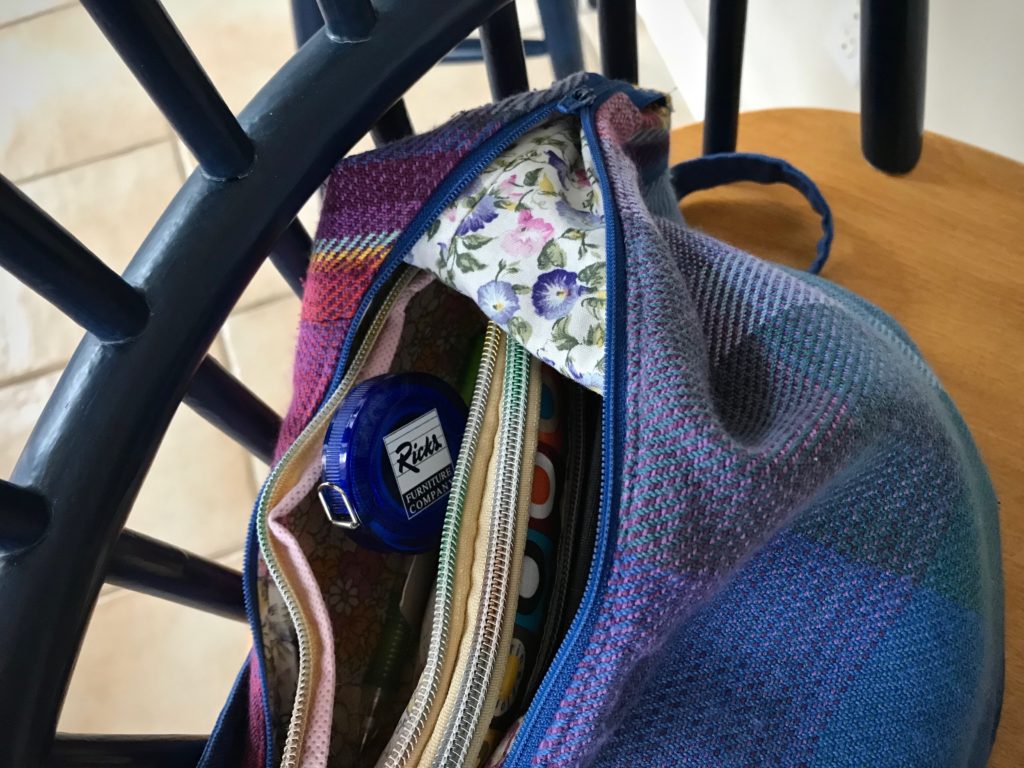
What have I missed? Can you think of other ways your tape measure comes in handy?
May you be blessed in full measure.
All the best,
Karen

